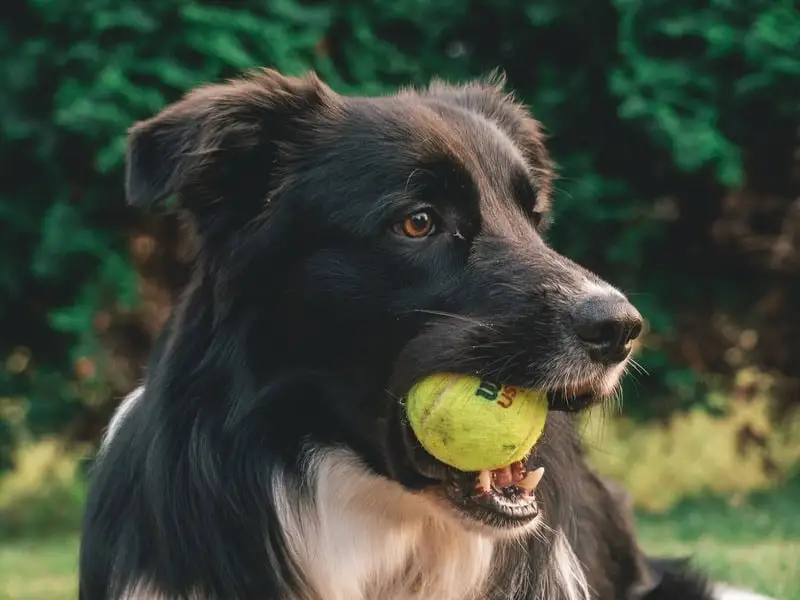Dogs and tennis balls, an age-old companionship that transcends boundaries of breed, size, and age. This seemingly inexplicable connection between our furry friends and those neon orbs of rubber and felt is a topic of perpetual fascination. Why do dogs, regardless of their individual temperaments, exhibit an unrelenting passion for tennis balls? In this comprehensive guide, we will delve into the multifaceted reasons behind this canine obsession. From their behavioral inclinations to evolutionary instincts and the physical attributes of tennis balls, we aim to uncover the science that underlies this captivating phenomenon.
Behavioral Reasons
1. Tap into Prey Drive and Retrieval Instincts
Dogs, as descendants of wolves, carry within them an innate instinct for hunting and retrieving.
This instinct is deeply ingrained in their genetic makeup, and tennis balls happen to be the perfect surrogate for their primal desires.
The bright color and the way the tennis ball moves mimic the erratic and fast-paced movements of prey.
When a dog chases a tennis ball, it activates their natural prey drive, making the chase an exhilarating game of hunting.
2. Associated with Play and Bonding with Owners
Play is a vital component of a dog’s emotional and physical well-being. Tennis balls have become synonymous with playtime for dogs.
The act of fetching a tennis ball engages a dog’s body and mind in a healthy and stimulating manner.
Additionally, playing fetch fosters a unique bond between dogs and their owners.
The act of retrieving the ball and bringing it back to its owner reinforces the sense of companionship and trust.
This simple yet effective game serves as a bridge between the two species, strengthening the human-canine bond.
Evolutionary Reasons
1. Simulating Hunting and Bringing Back Prey
The domesticated dog’s connection to its wild ancestor, the wolf, is still very much alive within their DNA. Wolves were pack animals that relied on cooperative hunting to secure food for the group. Dogs, through countless generations of domestication, retained this instinct to retrieve objects, much like wolves bringing back prey to the pack. Tennis balls provide the perfect outlet for dogs to mimic the behavior of their forebears. When they chase and retrieve a tennis ball, it gives them a sense of fulfillment that harkens back to their evolutionary roots.
2. Descended from Wolves Who Retrieved Food
The link between dogs and wolves is further highlighted by the fact that dogs share a common ancestor with wolves. In their wild state, wolves had to retrieve their food to ensure the survival of the pack. This retrieval instinct has been carried over into our canine companions. When dogs interact with tennis balls, they are essentially practicing an age-old behavior that has been passed down through the generations.
Physical Attributes
1. Scent and Texture
Tennis balls possess a distinct scent that can pique a dog’s interest. The combination of rubber and felt, along with the scent that clings to the ball, creates a sensory experience that captivates dogs. They can easily distinguish a tennis ball from other objects due to this unique scent. Moreover, the texture of the felt covering provides a tactile sensation that dogs find satisfying, making it a joy to grip and carry.
2. Bounce and Movement
The unpredictable bounce and movement of a tennis ball add an element of excitement to the game. Dogs are naturally drawn to objects that exhibit erratic movements, which simulates the movements of potential prey. The unpredictable trajectory of a tennis ball keeps a dog engaged and provides mental stimulation as they strategize and anticipate its movements.
3. Durability for Chewing
In addition to fetching, tennis balls serve as excellent chew toys for dogs. The durability of the rubber core allows them to satisfy their natural urge to chew, helping maintain their oral health by keeping their teeth clean and strong. The act of chewing also releases endorphins, promoting relaxation and reducing stress, making tennis balls a versatile source of entertainment.
Safety Considerations
1. Risks of Ingestion
While tennis balls offer numerous benefits to our furry companions, they are not without risks. Dogs with a particularly strong chewing instinct may attempt to tear apart the tennis ball and swallow parts of it. This can lead to choking hazards, intestinal blockages, or dental issues. It is crucial for owners to monitor their dogs during play and replace tennis balls when they show signs of wear and tear.
2. Signs of Wear
Dogs can be vigorous in their pursuit of tennis balls, and over time, these balls can deteriorate. Signs of wear may include fraying of the felt, cracks in the rubber core, or a diminished bounce. It is imperative for dog owners to inspect tennis balls regularly and discard any that show signs of deterioration to prevent potential health risks.
The deep-seated and enduring fascination that dogs have for tennis balls can be traced back to a combination of behavioral, evolutionary, and physical factors. The tennis ball’s ability to trigger a dog’s prey drive, simulate hunting and retrieval instincts, and provide sensory satisfaction through scent and texture make it an irresistible companion for our canine friends. Furthermore, tennis balls play a crucial role in bonding and strengthening the relationship between dogs and their owners. However, it is essential for responsible pet owners to be aware of safety considerations, such as the risks of ingestion and signs of wear. Understanding the science behind this canine obsession not only enriches our connection with dogs but also ensures their well-being and enjoyment. Tennis balls are more than just playthings; they are a bridge that links our beloved pets to their primal instincts, creating a profound and lasting connection between humans and dogs.
